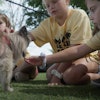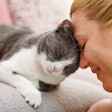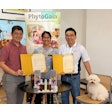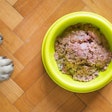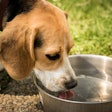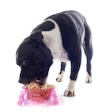
Pet cats are just that: pets, and finicky ones at that. They don’t live in research centers, like where many cat food palatability trials are conducted.
“In-home palatability testing of cat foods has the benefit of producing outcomes that are highly representative for the target pet population,” a group of Wageningen University researchers wrote in the journal Applied Animal Behaviour Science.
In contrast to traditional evaluations conducted in research facilities using expert panels, in-home testing better reflects consumer environments. Cats’ responses are influenced by individual traits, food histories and environmental factors, so in-home tests can offer a more representative assessment of how new diets might perform in the market. However, the lack of standardized in-home testing protocols has historically challenged consistency and repeatability.
To address this, researchers evaluated 62 privately-owned cats using two standard test formats: one-bowl acceptance tests and two-bowl preference tests. Each cat was assigned to test either a high- or low-contrast palatability pair of extruded dry foods, with differences established based on ingredient composition and palatability enhancers. Food intake was recorded over 10 days per test format, with documentation of leftovers and feeding behavior.
One key observation was that food intake remained stable from day one, across all food types and formats. This suggests that extended test durations may be unnecessary. One test day suffices to evaluate food acceptance and preference in cats, the researchers wrote. Cats adapted quickly, particularly with one day of pre-study familiarization using their regular diets, minimizing the impact of novelty or environmental stress.
While adding test days improved precision by reducing variability, it also increased the likelihood of participant dropout, primarily due to low food intake. Notably, 40% of cats in the one-bowl test and 27% in the two-bowl test did not complete the study. Most withdrawals occurred within the first three to four days, reinforcing the benefit of shorter test durations.
Increased sample size, on the other hand, reliably enhanced the precision of food intake estimates without compromising accuracy. The researchers modeled outcomes under various sample sizes and determined that with a 10% acceptable margin of error, reliable results could be achieved with 12 to 43 cats in the one-bowl tests and 17 to 23 cats in the two-bowl tests, depending on the contrast in food palatability.
The study also identified several factors influencing intake in one-bowl tests. Male and neutered cats consumed more, and intake declined with age. Cats fed only dry food before the study, or fewer types of food overall, also ate more. Those on scheduled meals ate more than cats fed ad libitum. In contrast, two-bowl test outcomes were less influenced by such variables, possibly due to the forced-choice design standardizing exposure to both test foods.
Careful selection of test subjects for in-home palatability trials should consider sex, age and neuter status, along with feeding history and schedule, the researchers wrote. Including cats with varied food histories and consistent feeding routines can improve generalizability while reducing dropout risk.
The study also recommended further investigation into owner compliance, as deviations from instructions, such as offering alternative foods, can skew results and increase the required sample size.
Overall, the findings offer a framework for refining in-home testing protocols to be both practical and statistically robust. Optimized in-home trials could enhance the predictive power of palatability testing while aligning more closely with real-world feeding conditions.
Potential in-home feeding trial guide
Pet food companies considering conducting scientifically grounded in-home palatability trials may be inspired to develop their own protocol by this step-by-step guide, based on Wageningen University research.
Step 1: Define trial objectives and food pairs
- Decide the test type: Choose between a one-bowl (acceptance) or two-bowl (preference) format, depending on whether the goal is to evaluate standalone acceptance or relative preference between two products.
- Select test foods: Prepare two diets that differ in palatability. Ideally, use foods with either high contrast (e.g., varied protein levels, fat content, or palatability enhancers) or low contrast for more nuanced preference insights.
Step 2: Recruit suitable participants
- Target privately-owned cats that:
- Are at least 1 year old
- Are not pregnant, lactating, chronically ill, or on medication
- Have no known food allergies or digestive issues
- Can be fed individually and exclusively with test foods during trial hours
- Use pre-screening questionnaires to gather data on:
- Feeding history (types and number of foods used)
- Meal schedules (ad libitum or scheduled meals)
- Cat characteristics (age, sex, neuter status, weight)
Step 3: Distribute materials and instructions
- Provide standardized materials, including:
- One or two clear food bowls (depending on test type)
- Pre-portioned and labeled test foods
- A feeding placemat with bowl positions
- A logbook for intake and behavior notes
- A simple tripod for smartphone video recording (optional but helpful)
- Detailed, easy-to-follow written and verbal instructions
Step 4: Include a one-day practice period
- Familiarize both cat and owner with the procedures using the cat’s regular food.
- Ensure owners understand the feeding schedule, how to weigh leftovers, and how to avoid influencing their cat’s behavior.
Step 5: Conduct the feeding trial
- One-bowl test: Offer one food for the designated test period (typically a single day, but may include up to 10 days if increased precision is needed).
- Two-bowl test: Offer both foods simultaneously, randomizing left/right placement daily.
- Feeding duration: Allow a fixed day-time slot per owner, ideally consistent across days.
- Feeding mode: Let owners use their cat’s usual method (ad libitum or meals), but encourage consistent practice throughout the trial.
- Instruct owners to remove bowls after consumption and store any leftovers for weighing.
Step 6: Monitor intake and collect data
- Owners record:
- Daily food intake (measured via leftover weight)
- Observations on eating behavior
- Any other food or treats given before/after test periods
- Optional: Owners record video clips of feeding sessions to support behavioral analysis or owner compliance verification.
Step 7: Address dropouts and ensure follow-up
- Track participation: Expect some dropouts, especially in early test days.
- Common dropout reasons include low food intake or owner non-compliance.
- Conduct a mid-test check-in with participants to resolve questions or clarify procedures.
Step 8: Analyze results
- One-bowl test: Calculate food intake as a percentage of the offered portion.
- Two-bowl test: Calculate preference ratios (e.g., high palatable food intake ÷ total intake).
- Use statistical methods (e.g., bootstrapping) to determine the required sample size and margin of error.
- With a 10% margin of error, expect to need:
- 12 to 43 cats for one-bowl tests (food dependent)
- 17 to 23 cats for two-bowl tests (based on contrast level)
- With a 10% margin of error, expect to need:
Step 9: Interpret insights and apply to product development
- Examine how food characteristics (e.g., protein, fat, coating) influenced acceptance or preference.
- Analyze how cat traits (age, sex, neuter status) and prior feeding history affected outcomes.
- Use findings to refine formulations or support marketing claims grounded in real-world relevance.
Step 10: Consider next steps for scaling or refinement
- Incorporate owner feedback: Collect qualitative data on perceived palatability, appearance, or behavioral cues.
- Develop broader panels: Plan future studies with demographically balanced cat populations to reflect the market more accurately.
- Establish internal protocols: Use this framework to standardize future in-home palatability trials across products or regions.

